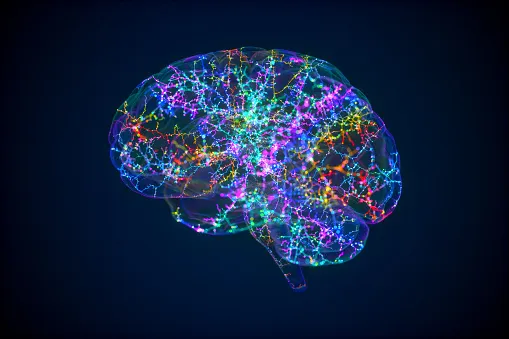
ADHD, or Attention Deficit Hyperactivity Disorder, is a neurodevelopmental disorder characterized by difficulties with attention, hyperactivity, and impulsivity. While traditional treatments such as medication and therapy are commonly used to manage ADHD symptoms, some individuals have turned to alternative methods like binaural beats in hopes of finding relief.
Vorster [44] found that binaural sound reduced attention in people with ADHD, while Zimmermann et al [43] explored the effect of silence on increased arousal and decreased positive mood. Attention Deficit Hyperactivity Disorder (ADHD) is a neurodevelopmental disorder that affects individuals in many ways. It is characterized by symptoms such as hyperactivity, impulsivity, and inattention. It can be a debilitating condition for those who experience it, affecting their ability to concentrate, focus, and stay organized. Although ADHD can be managed with medication and therapy, many people are turning to alternative treatments such as meditation and binaural beats to alleviate some of the symptoms of ADHD.
But this is all about removing shame from the language when discussing tasks. If you set a small, reasonable goal, chances are better that your ADHDer will accomplish it, which will give them a sense of satisfaction and build their confidence. If you want to know more about your brain and ADHD, consider discussing it with your family physician or a mental health professional who specializes in ADHD. ADHD treatment options that might target changes in the brain include central nervous system (CNS) stimulants such as methylphenidate (Ritalin).
What are Binaural Beats?
Moreover, for adults with busy work schedules and families to take care of, common side effects of ADHD medications like headaches, upset stomach, dizziness, mood swings and high blood pressure often appear worse than dealing with the symptoms themselves. A good instrumental music track that is not predictable helps increase novelty, which can boost your dopamine and make it easier to focus. Furthermore, according to Barkholtz, familiar music for some people can be distracting because the temptation to hum or sing the lyrics will be too powerful. For others, listening to music you’ve already heard before can be more easily tuned out. In people without ADHD, however, there is no need to redirect that late-selection attention.
Finally, a number of study approaches had participants execute an unrelated additional task during binaural beat stimulation [e.g., 25, 65]. The available studies on the effects of binaural beats use a wide range of control conditions, that is pure tones, non-superimposed tones, monaural beats, or silence [e.g., 1, 25, 64]. A final issue is that when it comes to EEG and MEG measurement, studies differ considerably with respect to data collection and data processing procedures [e.g., 1, 61, 64], as well as data analysis [e.g., 54, 58, 61]. Second, the global–local task generates conflict by providing irrelevant information that indicates an alternative response. As pointed out previously, global–local tasks often employ congruent and incongruent stimuli, so as to prevent strategies that use information from one level to predict information from the other. Most importantly for our purpose, performance is better in congruent than in incongruent trials (Navon, 1977).
Binaural beats are auditory illusions created when two slightly different frequencies are played in each ear. The brain perceives a third tone that is the difference between the two frequencies. This process is believed to influence brainwave activity and promote relaxation, focus, and other cognitive benefits.
The aim of the study is to (1) analyze the evidence that music is beneficial in reducing the symptomatology of ADHD using systematic review and (2) propose the application of music in video games following music therapy strategies. I’ve spent a lot of time experimenting with instrumental music to help my ADHD brain get more focused and I’ve found that combining instrumental music with binaural beats really takes my ability to focus to the next level. Binaural beats have emerged as a beacon of hope for many individuals grappling with ADHD. These auditory tools offer a non-pharmaceutical approach to managing symptoms, providing an alternative or complement to traditional treatments. This chapter celebrates the real-life stories and experiences of those who have found solace and improvement in their ADHD symptoms through binaural beats.
The present systematic review aims at an evaluation of available empirical studies investigating brainwave entrainment effects in response to binaural beat stimulation. To examine this question, a systematic search for literature was performed, and a selection process according to specified inclusion and exclusion criteria was conducted. In a last step, information concerning study characteristics, study designs and study results was extracted and evaluated. Our findings demonstrate not only contradictory study outcomes, but, most notably, a considerable heterogeneity in study approaches in this field of research. As evident from the present review, the lack of an established general methodological framework renders the outcomes of the available studies of limited comparability. More recently, research has mainly focused on the psychological effects of binaural beat stimulation [30].
The Science Behind Binaural Beats for ADHD
Research on the effectiveness of binaural beats for treating ADHD is limited, but some studies suggest promising results. A study published in the Journal of Neurotherapy found that participants who listened to binaural beats experienced improved attention and concentration compared to those who did not listen to the beats.
While more research is needed to fully understand the potential benefits of binaural beats for ADHD, some individuals report positive outcomes when incorporating them into their treatment plan. It is important to consult with a healthcare professional before using binaural beats as a primary treatment for ADHD.




